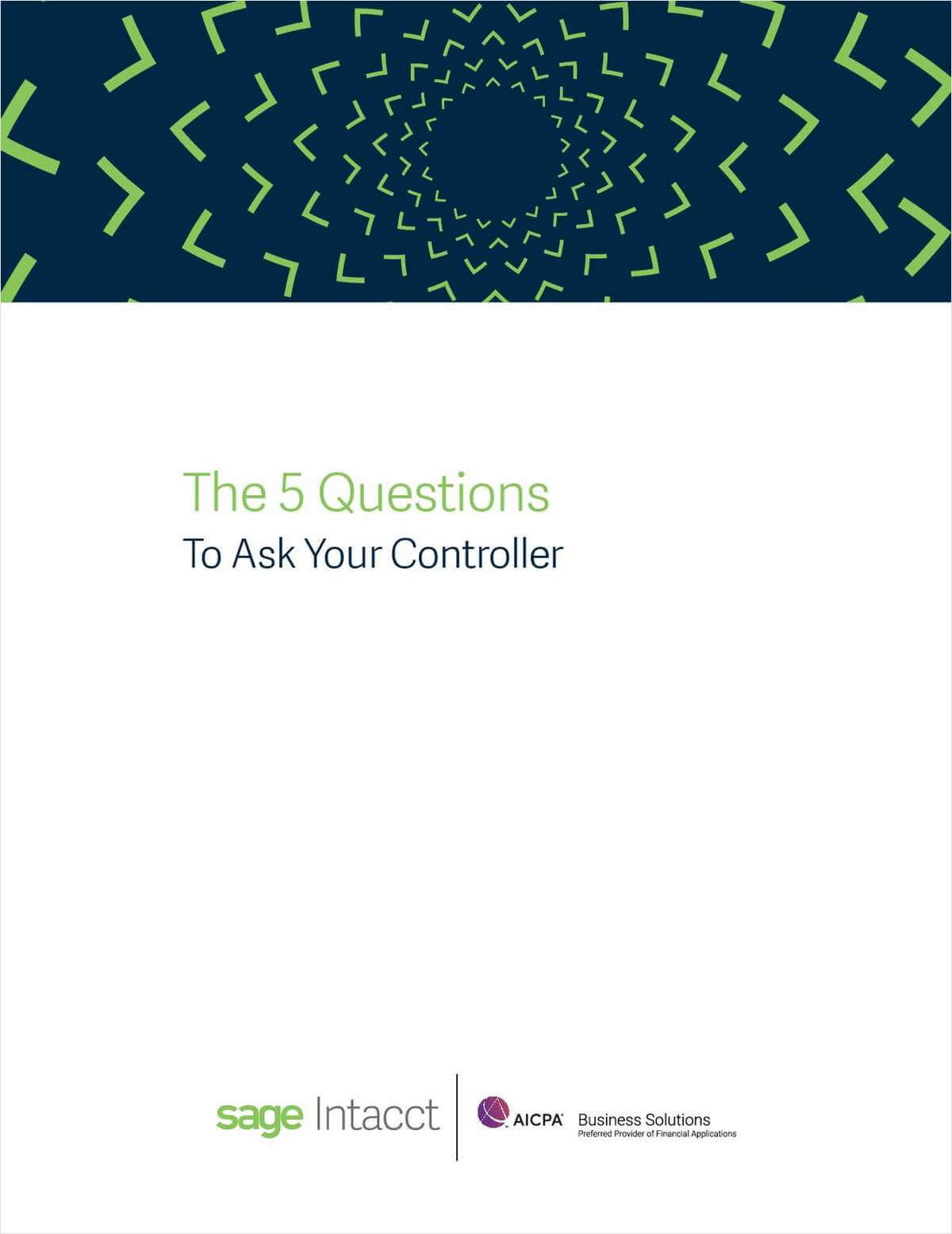Today’s controllers fulfill an increasingly strategic role in their organizations, creating higher levels of financial visibility to help drive growth and profitability. As the job of a controller evolves, so does their relationship with the financial organization. Specifically, modern CFOs need to collaborate with the controller to ensure that the organization gets the full benefit of the controller’s talents and knowledge. The CFO also needs to be certain that the controller’s office is operating efficiently and accurately.
To start a conversation around best practices, consider asking your controller these five questions: 
1) How many manual journal entries are we making during the close? Too many manual journal entries delay a closing period—and can also be a leading symptom of deeper problems. They can conceal anomalies and errors that actually have broad, systemic roots. You may be plagued with various accounting processes—or a level of complexity that calls for revised standards. To optimize the closing process and reduce the incidence of manual journal entries, use audit difficulties and exceptions to identify areas needing policy definition, process improvement, and automation.
2) To minimize risk, have you reviewed compliance with local jurisdictions? The controller has a direct role in nearly every financial transaction, making it essential that they help to identify and minimize the company’s risk exposure. This is especially critical for growing companies, whose regulatory compliance risks steadily increase in magnitude and quantity over time. To help your controller steer your company clear of unnecessary risks, create a central review process to ensure the right controls are in place.
3) How long is it taking to close the books, and what might be causing delays? Controller efficiency is best measured by how quickly and accurately the team closes the books. Start with strong planning and preparation, such as handling all billing and expense issues prior to the period end. Automation is also essential—it provides the desired speed, efficiency, and accuracy without increasing staffing levels. A fast close enables the accounting and finance team to move beyond merely reporting results and into forward-looking activities that can shape future outcomes.
4) Why are we still using Excel spreadsheets? There are lots of reasons for the continued use of Microsoft Excel in corporate accounting—namely, familiarity or lack of experience with other tools. However, Excel has its limitations—such as its inherently breakable models, security issues, and lack of shareability—which means no company should rely on it as its financials backbone. However, it can be a valuable tool for specific, limited purposes.
5) Is it possible to integrate our financial information and operating metrics? Many financial systems can now accommodate analyses of operating metrics to create a richer, fuller picture of the business—enabling the controller to assume a role as the provider of financial visibility. Merging financial data and operational metrics could help your organization to:
-
- Identify opportunities to maximize revenue and minimize expense.
- Allow controllers to collaborate with other areas of the company to manage their functions in non-financial terms.
- Establish the financial truth by ensuring everyone works from a single, merged reporting system.
Exploring the answers to these five questions with your controller will help create a stronger, more effective financial structure that will benefit your entire organization. And when supported by best-in-class financial management software from Sage Intacct, your controller—and your entire finance team—will better understand and control sources of financial risk, implement more efficient processes, and gain deeper insight into both the financial and operational metrics of the business.
Contact Dean Dorton for a free consultation today.








